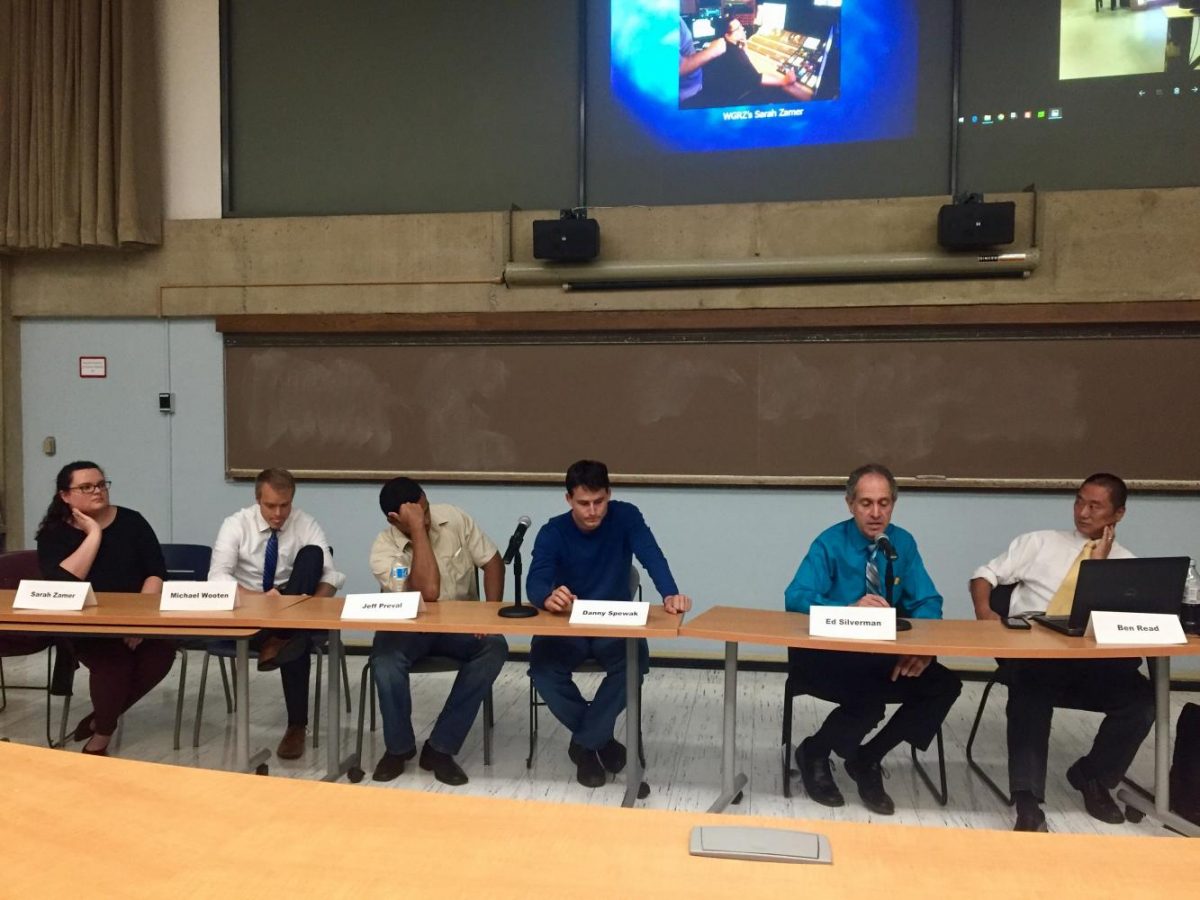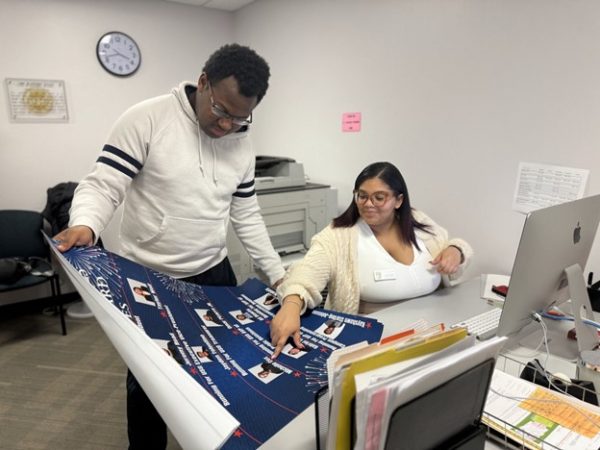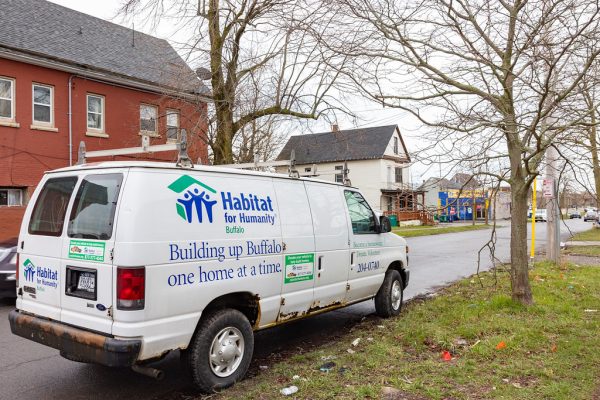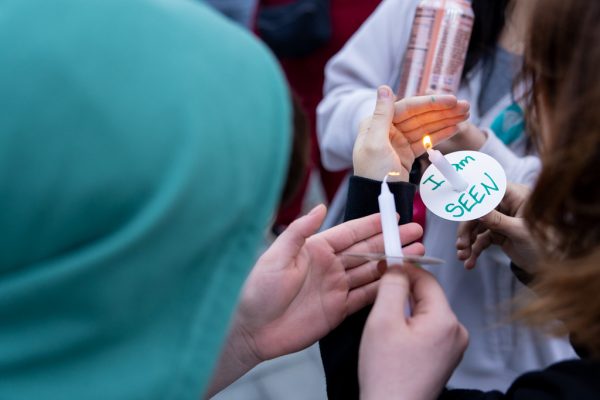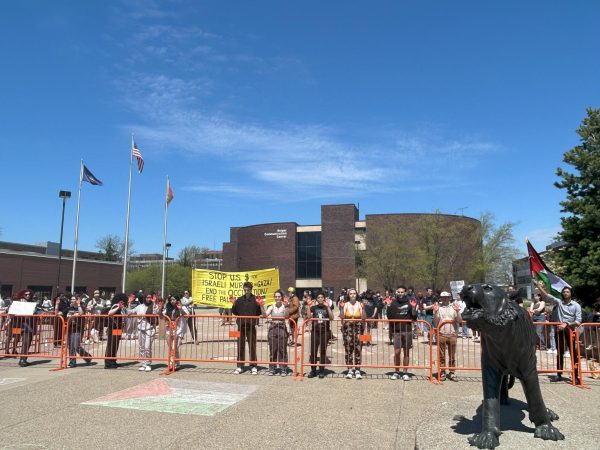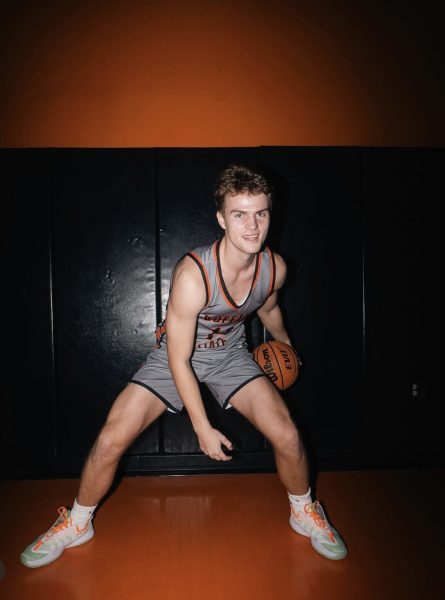WGRZ journalists visit Buffalo State for panel about hurricane coverage
Since hurricanes Harvey and Irma devastated the southern coast of the United States a few weeks ago, there has been quite a bit of controversy about the ethics of putting journalists in the middle of the storms.
SUNY Buffalo State’s communication department hosted a panel in Bulger Communication Center east featuring several broadcast media members of WGRZ-TV earlier today. The panelists discussed going down to Texas and Florida during the natural disasters to help their sister organizations out, as well as the ethics of storm reporting and safety on the job.
On the panel were reporters Michael Wooten, Jeff Preval and Danny Spewak, as well as photojournalist Ben Read, director Sarah Zamer and audio engineer Ed Silverman. The panel was moderated by Professor Deborah Silverman and Professor Joseph Kasko.
Broadcast journalists visit the site of a natural disaster and usually get right in the middle of it to accurately paint the picture of destruction and inform the viewers of the severity of the situation. Lately, many have wondered if this kind of on-the-scene reporting is necessary and whether their lives may be in danger.
“As Jeff and I drove through the neighborhoods we would find large debris piles everywhere,” Ben Read said about the effects of Hurricane Harvey. “It wasn’t just your household trash, it was the entire contents of homes on the side of the road.”
Michael Wooten described the damage in Houston by saying “it was like nothing I’d ever seen.”
“When we first got there, everywhere you looked was devastation,” Wooten said. “Over the course of the week we were there, we covered stories north of downtown, south of downtown, east and west and it was just the same in every direction, just neighborhoods completely underwater.”
Danny Spewak went to Tampa, Florida to help cover the hurricane before it began. He said it was “sunny and beautiful, Tampa, Florida weather.”
“But you knew in 24 hours, at the time, it was going to be a category four hurricane and as we’re there the models keep shifting and suddenly Tampa is the bullseye,” Spewak said. “So, we’re sitting there with 24 hours to go thinking- this thing is coming right at us.”
While the reporters felt that their safety while covering these disasters is usually in their control, Spewak admitted that he did, at one point, feel anxious. He and his crew were doing reports when their phones kept alerting them to get to a shelter as soon as possible, but they were still an hour from the hotel.
“We had that little bit of anxiety of, you know, if we get stuck on the side of the road… I just wanted to get to wherever we were going and be done,” Spewak said. “When you’re in the middle of a hurricane you can’t hang out and see the sights.”
Read described a moment after Hurricane Irma had passed, when the aftermath was fresh and said it “really illustrated the danger of being out on the roads.” The areas had no power, they were driving in the dark and trees and power lines were down “all over the place.”
“It was kind of one of those ironies that the media gets criticized for where we’re sitting there saying ‘don’t go out on the roads it’s not safe to be on the roads’ and yet we’re on the roads,” Read said.
The panelists also discussed delicately getting the stories from victims of natural disasters. One man, according to Preval, was “very shaken up” about water damage to his marriage certificate and family Bible but still chose to share his story.
“Surprisingly, even with people who have lost so much… you really do find a lot of people who will share their stories,” Preval said. “Because they have suffered a lot and they appreciate that you’re interested in them.”
Silverman and Zamer explained the logistics of diving into a new, temporary newsroom with old equipment. They essentially had to re-teach themselves and others about the software.
“Day one, I would say it was probably the fastest training session I’ve ever been through,” Zamer said. “It was fascinating because I almost walked in expecting people screaming… constant chaos. The level of professionalism and how everybody handled themselves was extremely humbling.
Near the end of the panel, they showed photos of a Dunkin Donuts with over an hour long wait, since most restaurants and businesses were closed.
“People were so desperate they got coffee at Dunkin Donuts,” Wooten said.
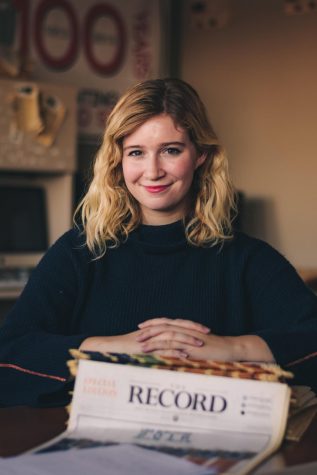
Francesca Bond is an undergraduate student at SUNY Buffalo State. She has a major in Journalism and a double minor in Sociology and Political Science....


